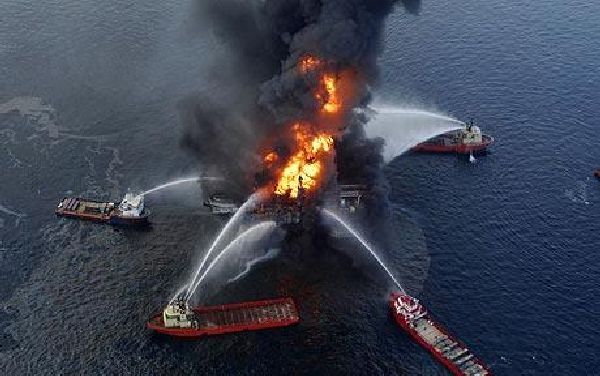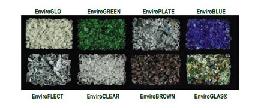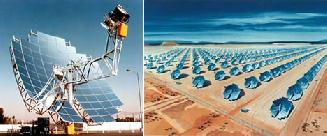
As we know it
An oil spill can be considered as a form of pollution, which results from the release of liquid petroleum hydrocarbon into the environment due to human activity. Specifically in this case, by environment we generally mean the ecological system covering the oceans and the coasts. The adverse effects may be multitudinous in nature, right from biologically harming a myriad of life-forms found in such ecosystems, like birds, fishes and marine mammals to causing severe strain upon the overall economy.
The magnitude of risks involved can be gathered by the following figures: each day around 31.5 billion gallons of oil are transported via sea everyday. And the most recent of our oil spills – Deepwater Horizon in the Gulf of Mexico (it was the largest accidental marine oil spill in the history of the petroleum industry) had an ‘fall-out’ spill area ranging from 6,500 to 180,000 sq km, and in the process lost around 206,000,000 US gallons of oil! Other than the significant damages done to the environment, it is estimated that the tourism industry of Florida alone could lose like $23 billion in revenues, because of the aftereffect of this disaster.
Need for change
The preventive equipments and devices generally used for oil spills like containment booms, skimmers, sorbents (large absorbents that absorb oil), chemical and biological agents, etc. can certainly deter the flow of oil spill, but the meticulous procedure itself can be time-consuming. And time is certainly of essence here, as the oil can rapidly cover a much large area on the surface of the sea, which leads to serious damage of marine resources. Even an aggressive clean up operation can severely affect specific habitats in an ecosystem.
What’s next?
1. Oil Spilling Guard designed by Zhu Yi:
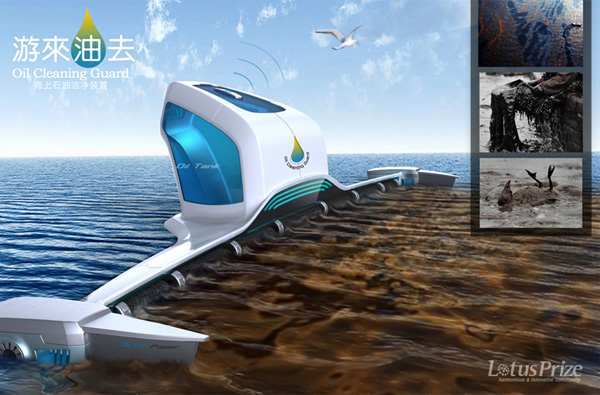
What’s new?
This can prove to be an utterly convenient as well as an adroit conception. The fiber-made contraption can function dually, as it actually prevents the oil spillage from spreading on the surface of the sea and simultaneously carries out the filtering process of the oil by separating it from water. The resultant extracted oil is then stored in the device’s inbuilt tank. Moreover, the craft can also transmit distress signals to warn the authorities, in case of potential danger to marine life-forms.
What difference will it make?
Other than just preventing oil spills, this wondrously crafted yet environment friendly device can also filter the oil from water. That can certainly result in a more speedy recovery operation.
2. Oil-eating AEROS robots:
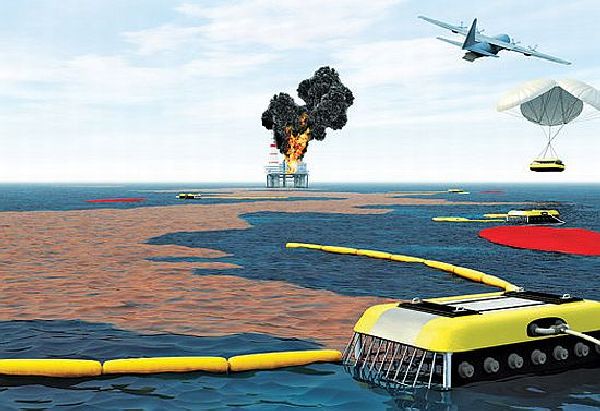
What’s new?
Now it’s time for some sci-fi vibe; the AEROS (Airborne Robotic Oil Spill Recovery System ) is basically a state-of-the-art oil containment system which includes a fleet of airplane-deployed robots that can restrict the oil spill and use centrifuge-like separators to collect that oil for refining. For the incredible system to work, airplanes first drop these robots and inflatable booms near the spill site. Once inflated, the booms space out and surround the oil, and the robots use an advanced GPS to get behind the boom’s flap, directing water into their filtering system.
What difference will it make?
According to the developers, each robot can clean up to 3000 gallons of oil per minute and discharge 99 percent pure water. The remaining oil collected in the process is stored in the storage bladders for the operation team to clean them later and even recycle the oil.
3. The OSP robot:
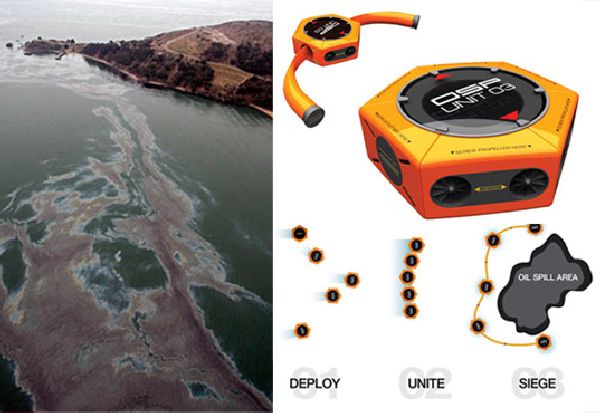
What’s new?
Brilliantly conceptualized by designer Ji-hoon Kim, the OSP robots will be solar powered, modular oil-cleaning automatons that can be rapidly deployed by helicopter or boat. Once deployed to the scene of oil spill, the tiny robots can connect and contain the spill with an inflatable barrier. This in effect can allow more precious time for the cleanup teams to come in and manage a much less severe calamity.
What difference will it make?
The rate of spill can increase exponentially over time, ultimately having adverse effects on the marine life and even reaching shorelines to disturb the wildlife. Hence, the faster a spill can be dealt with, the better the outcome. Now, this is where such a conception comes into the picture. Moreover, the technology incorporates the emission free, clean solar energy.
4. Membrane developed by Purdue University:

What’s New?
Purdue University’s material engineers have managed to devise a new type of membrane, whose material filter was tested (in solutions containing oil suspended in water) to have a 98 percent efficiency of separating oil from water.
What difference will it make?
This convenient conception can have a plethora of usages other than containing oil spills. This includes – removing oil from a ship’s bilge water, cleaning wastewater contaminated with oil, water purification and even industrial uses. Furthermore the scientists expect the sturdy material to be more durable than ordinary, conventional filters.


